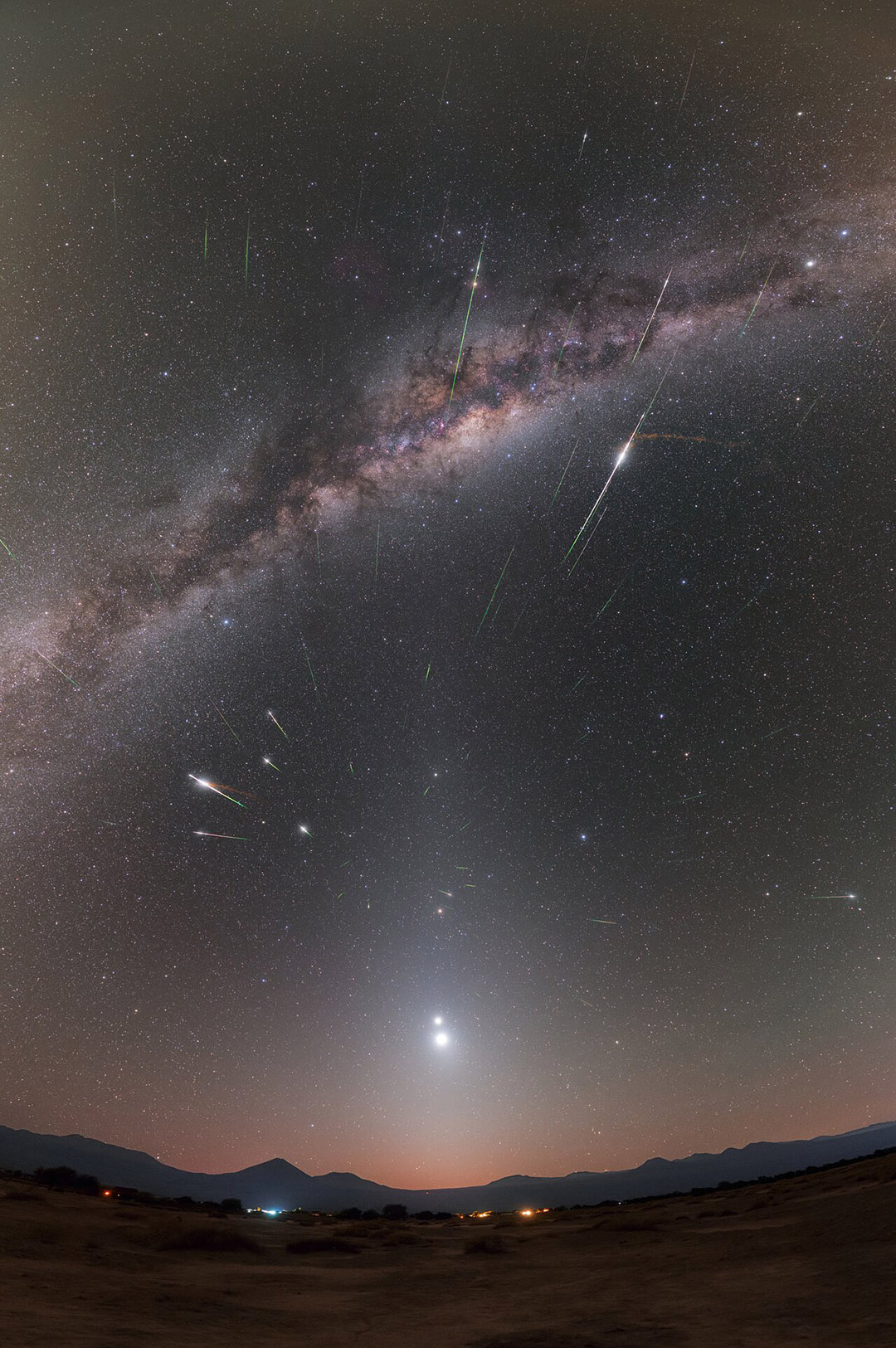About StAnD
Image: NASA Earth Observatory. Caption by Robert Simmon.
StudenTs As plaNetary Defenders (StAnD) aims to engage primary and secondary school students in the subject of asteroids, meteors, and planetary defence.
Meteor shower. Credit: ESO/P. Horalek
The 36-month programme brings the exciting subject of asteroids, comets, meteors and meteorites to the classroom using carefully prepared activities and experiments. The partners involved have joined their expertise in each one of these themes to design an integrated approach that will allow students to follow the journey of these cosmic visitors from the depths of space to our planet. StAnD will introduce a new trend of activities engaging students in their STEM (Science, Technology, Engineering, and Mathematics) curriculum.
StAnD will produce a kit that will encourage students to work collaboratively and will engage them in the fields of science and technology, and enhance their interest in the STEM fields.
The activities involved in the project also have the considerable potential of leading to new original scientific discoveries such as the discovery of new asteroids and meteorite falls.
Their teachers will receive training and support to prepare topics related to astronomy, the solar system, and space exploration.
The teachers will make use of selected online resources to better present the contents to the students and will acquire innovative student-centred methodologies that facilitate the integration of digital content into the STEM curriculum. They will also receive training on how to use the robotic telescopes and the relevant software to plan the observations and analyse the data, as well as how to operate and interpret the meteor images acquired by the camera systems. They will additionally learn how to collect and identify the micrometeorite samples.
The results of various phases of the project will be continuously disseminated, spreading the results among the participants, countries, at European and international level.
StAnD Fact box
What?
Students As planetary Defenders (StAnD) aims to engage primary and secondary school students and teachers in the subject of asteroids, meteors, and planetary defence, raising interest in science and space exploration, and improving their skills in science, technology, engineering and mathematics (STEM) subjects. Students will have the opportunity to discover new asteroids in telescopic images obtained in Hawaii, USA, and study in more detail the properties of known asteroids and comets using robotic telescopes in observatories around the world. They will learn how to use new technologies, will improve their digital skills, and will work as teams in different campaigns during the project.
Why?
Several growing needs in education are targeted in StAnD. The project is designed to raise interest and awareness of the importance of STEM fields among young students; to upgrade educators’ skills and learning in various fields; to improve educators’ and learners’ digital literacy; and to bridge the digital divide, ensuring an inclusive environment. These are crucial areas for society’s future needs. Trained teachers will become better prepared to address STEM topics, leading to improved learning by the students. The activities will engage students and teachers and lead to potential scientific discoveries.
Who?
The Istituto Nazionale di Astrofisica (INAF) is coordinating the project, leading the partnership of COSPAR, NUCLIO, Ellinogermaniki Agogi and FTP-Europlanet GuG.
For whom?
A minimum of 50 schools will be involved in the project, reaching 135 educators and 1,500 students. The main target groups are schools, scientists, and other relevant stakeholders in the field of education.
How?
Meteor detection cameras will be installed in schools in each of the participating countries, and students will operate them, with support from project members. These cameras will detect meteors that enter the Earth’s atmosphere and may register a meteor large enough to leave a remnant in the ground—a meteorite—that can be recovered by specialists, and possibly the re-entry of man-made objects. Students will also have the opportunity to recover micrometeorites, microscopic fragments of asteroids and comets, by using the Stardust Hunter kit that will be developed by the project team. The project will include:
- Teacher training sessions by means of massive open online courses (MOOC) and two summer schools;
- Installation and operation of meteor detection cameras in participating schools;
- Micrometeorite collection using the detection kits;
- Asteroid Search Campaigns using professional telescopes in Hawaii on the framework of the International Astronomical Search Collaboration; and
- Asteroid follow-up observations using telescopes of the Las Cumbres Global Observatory.
Where?
Initially in schools in Germany, Greece, Italy and Portugal, and it is hoped to mainstream the methodology being piloted in this project to other schools at a global level.
Duration?
36 months; starting 1 September 2023.

